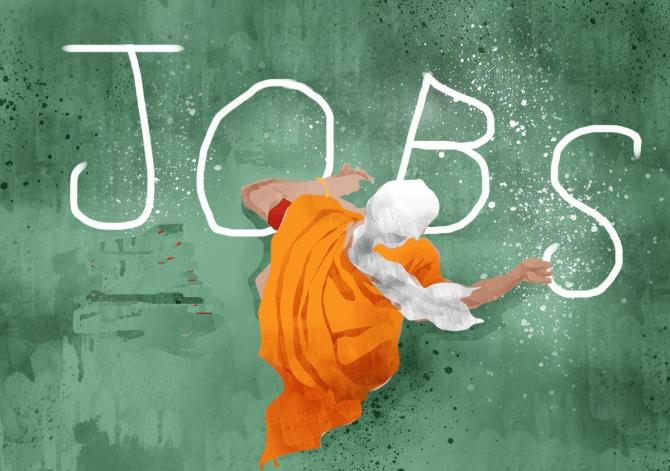Uttarakhand saw the sharpest decline (of 11 per cent) in the “total persons engaged” in manufacturing in the worst-hit pandemic year of 2020-21 as industrial units shut shop, according to the latest Annual Survey of Industries (ASI) data, released by the Ministry of Statistics and Programme Implementation (MoSPI).

This was followed by the decline in the workforce in states such as Jharkhand (8.9 per cent), West Bengal (8.3 per cent), Kerala (8 per cent), and Karnataka (7.8 per cent).
The “total persons engaged” in an enterprise is defined as the sum of directly employed workers, supervisory or managerial workers, and the unpaid family members who might be engaged in the enterprise.
In terms of absolute decline in the workforce in the manufacturing sector, Tamil Nadu saw the highest dip (174,000), followed by Karnataka (84,436), Maharashtra (79,367), and West Bengal (60,000) in FY21.
States that saw the sharpest rebound in manufacturing employment in FY22 include Jharkhand (13 per cent), Maharashtra (9.2 per cent), and Karnataka (8.3 per cent).
However, the workforce in FY22 when compared to FY20 in some states shrank.
They are Delhi (13.6 per cent), Assam (11 per cent), Kerala (8.9 per cent), Uttarakhand (5.2 per cent), Himachal Pradesh (5.1 per cent), West Bengal (3.1 per cent), Tamil Nadu (1.4 per cent) and Karnataka (0.1 per cent).
The figures show employment in manufacturing in these states is yet to reach the pre- pandemic level.
India’s employment in manufacturing during FY21 declined by 3.2 per cent to 16.1 million and subsequently rose by 7 per cent to 17.2 million.
While urban employment declined 6 per cent in FY21 as workers started migrating to villages, rural employment marginally increased by 0.3 per cent during the year.
However, in FY22, rural and urban employment grew 5.2 per cent and 8.5 per cent, respectively.
Among those in which the workforce decline in 2020-21 was the worst were apparel (17.3 per cent), textiles (4.9 per cent), and other non-metallic mineral products (4.2 per cent).
Among the top 10 sectors with the largest workforce, five sectors including basic metals (1.2 per cent) and machinery and equipment (0.2 per cent) saw a decline in employment.
However, during 2021-22, all the sectors recovered from their pandemic low in headcount with wearing apparel (13.2 per cent), rubber and plastics products (12.3 per cent) and machinery and equipment (9.9 per cent) registering the highest growth in workforce.
However, the manufacturing workforce in 2021-22 remained below their pre-pandemic level of 2019-20 in 10 out of a total of 29 sectors including other transport equipment (14.1 per cent), beverages (11.7 per cent), printing and production of recorded media (11 per cent), leather and related products (9.7 per cent), and wearing apparel (6.4 per cent).
The ASI is the most important source of industrial statistics of the registered organised manufacturing sector.
It covers all establishments employing 20 or more workers with power, and 40 or more workers without power.
“The ASI results for the year 2021-22 exhibits the resilience shown by the Indian manufacturing sector and tells the unique turn-around story of the Indian manufacturing sector after the adverse effect of pandemic witnessed in 2020-21 in terms of output and input contraction and also a marginal fall in employment,” the MoSPI said in a statement.











